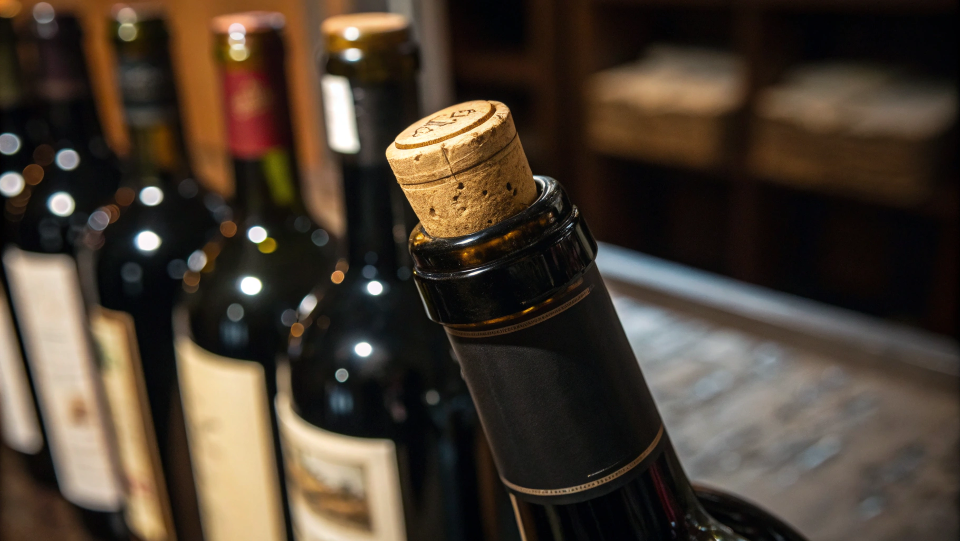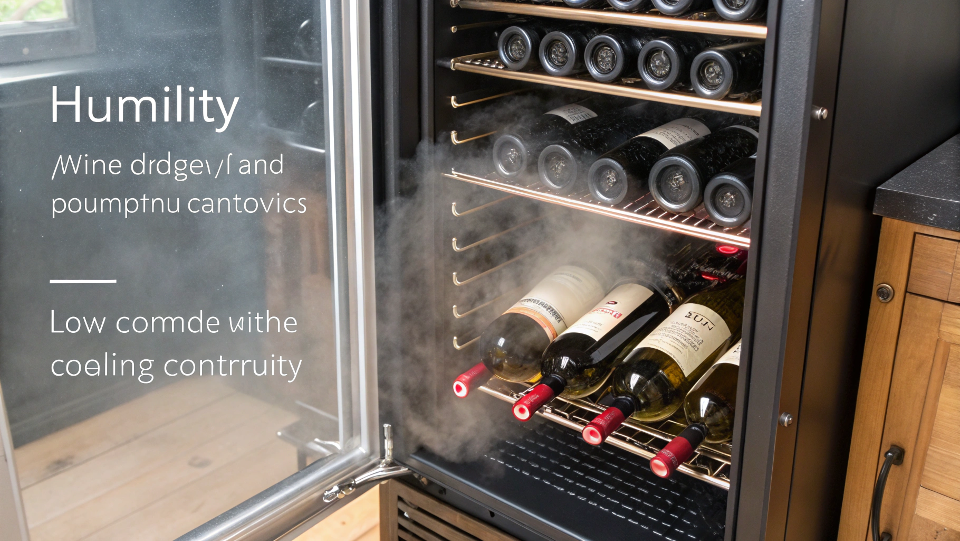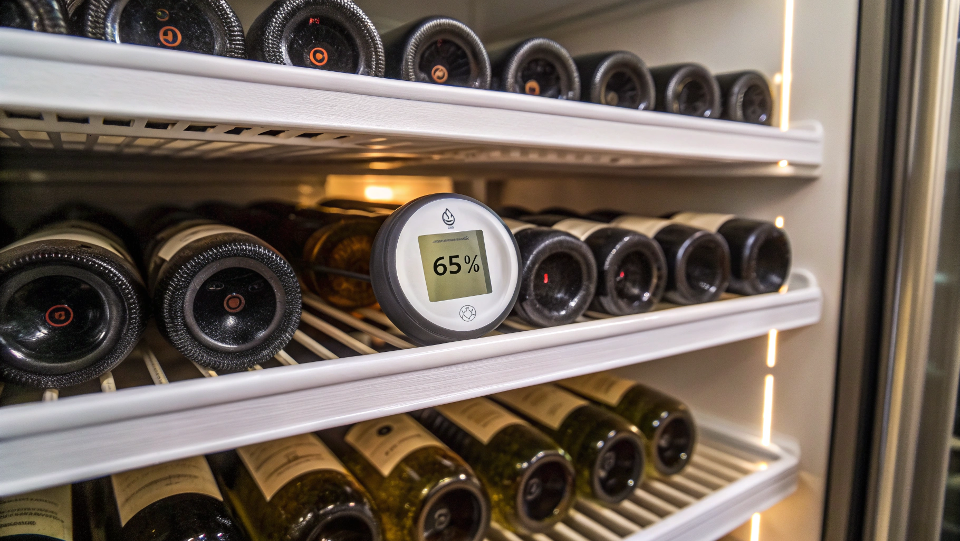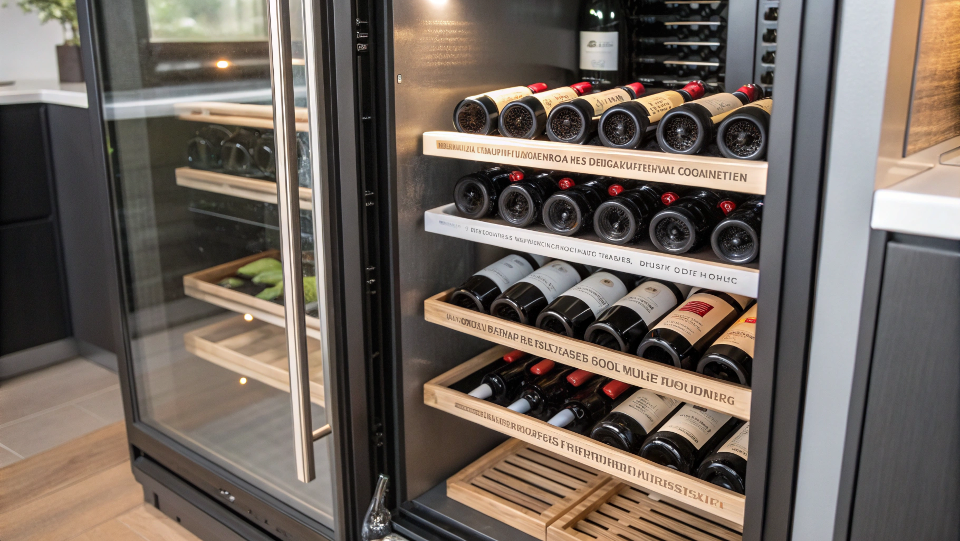Worried about your wine collection? Incorrect humidity can shrink corks and spoil your bottles. Proper humidity control is the secret to protecting your investment and ensuring perfect aging.
Humidity control is vital in a wine fridge to keep corks from drying out. A dry cork shrinks, allowing oxygen to enter the bottle and spoil the wine. Proper humidity also prevents mold growth and keeps labels intact, preserving the wine's value and integrity.
I remember talking to a client, Alex, who was just starting his retro appliance brand. He focused so much on temperature that he overlooked humidity completely. A few months later, some of his best display bottles were ruined. This experience taught both of us a valuable lesson. It's not just about keeping wine cool; it's about creating the perfect environment. Let's break down exactly why this one factor is so critical.
Why is humidity important for wine storage?
Ever wonder why a treasured wine tastes off? A dried-out cork might be the culprit, letting air spoil your bottle. The right humidity is your simple defense for perfect storage.
Humidity is crucial for wine storage because it maintains the integrity of the cork. A moist cork stays expanded, creating a tight seal. This prevents oxygen from entering and spoiling the wine. It also stops wine from evaporating out, preserving both flavor and volume over years.

When I started my refrigerator factory, I learned that creating an environment is more than just controlling temperature. For wine, the cork is the gatekeeper. It's a natural material that needs a specific moisture level to do its job right.
The Cork's Critical Role
Think of a cork like a sponge. When it has the right amount of moisture, it stays plump and firm, pressing tightly against the glass neck of the bottle. This perfect seal does two things: it keeps air out and wine in. Oxygen is the enemy of aged wine. It causes oxidation, which turns the complex flavors flat and sour. A good seal ensures your wine ages gracefully, developing the nuanced tastes you're waiting for.
The Dangers of Low vs. High Humidity
Getting the balance wrong has consequences. Both too little and too much humidity can cause problems for your collection. I've seen clients struggle with both, and it's a frustrating experience.
| Humidity Level | Impact on Cork & Bottle | Consequence for Wine |
|---|---|---|
| Too Low (<50%) | Cork dries out, hardens, and shrinks. | Air seeps in, causing oxidation. Wine spoils and evaporates. |
| Ideal (50-70%) | Cork remains moist, elastic, and expanded. | Perfect seal maintained. Wine ages properly without spoilage. |
| Too High (>70%) | Mold and mildew can grow on the cork and bottle. | Labels can peel off, reducing resale value. May impart musty odors. |
It's a delicate balance. You want enough humidity to protect the cork but not so much that you damage the bottle's exterior or invite mold.
How does humidity affect the fridge?
Think your wine fridge manages itself? Without proper humidity control, it can become a breeding ground for mold or a "wine dryer." Understanding your fridge's system is key to its performance.
Humidity directly impacts a wine fridge's internal environment and performance. High humidity can cause condensation and frost buildup on the cooling elements, forcing the compressor to work harder. Low humidity, often a byproduct of powerful cooling systems, requires a dedicated humidification system to compensate and protect the wine.

From my factory days, I know that a refrigerator's main job is to remove heat. But this process also removes moisture from the air. This is a big challenge for wine fridges. The cooling system itself can become the source of the problem if not designed correctly to account for the unique needs of wine.
Cooling's Effect on Air Moisture
When the compressor in your wine fridge runs, it cools the evaporator coils. Moisture from the air inside the fridge condenses onto these cold coils, often as frost. When the fridge cycles off, this frost melts and is drained away. This cycle constantly pulls humidity out of the unit. Without a system to put moisture back in, the environment becomes far too dry for long-term wine storage. This is why a standard kitchen fridge is terrible for wine; it's designed to keep food dry, which is the exact opposite of what a wine cork needs.
Active vs. Passive Humidity Systems
To solve this, wine fridges use one of two methods:
- Passive Humidity: This is the simpler approach. Some fridges have a small water reservoir or tray inside. As water evaporates from the tray, it adds humidity back into the air. It's a low-tech solution that works reasonably well in stable environments but often requires you to manually refill the tray.
- Active Humidity: Higher-end models have a more advanced system. They use sensors (hygrometers) to monitor humidity levels and have built-in humidifiers or systems that manage the condensation cycle to maintain a precise level, automatically adding or adjusting moisture as needed. This is the best option for serious collectors like Alex's customers who want set-it-and-forget-it protection for their valuable bottles.
What should the humidity be in a wine fridge?
So, you know humidity is important, but what's the magic number? Guessing wrong can damage your wine corks or bottle labels. The ideal range ensures your collection is perfectly safe.
The ideal humidity level for a wine fridge is between 50% and 70%. This range is the sweet spot that keeps corks moist enough to maintain a tight seal without being so damp that it encourages mold growth or causes labels to degrade and peel off.

The "perfect" number isn't a single digit, but a range. Think of it as a safe zone for your wine. Based on decades of wine-making tradition and modern science, the consensus is clear. This target mimics the conditions of traditional underground wine cellars in Europe—cool, dark, and consistently damp. For my clients who are building their brands, like Alex, I always stress that featuring this capability is a huge selling point.
The Ideal Humidity Range: 50% to 70%
This range provides the perfect balance for long-term storage. It's high enough to prevent corks from drying out but low enough to stop mold from taking hold. Within this zone, your wine is safe for both short-term enjoyment and long-term aging. Most good wine fridges are designed to maintain this level automatically, but it's always wise to be able to verify it.
How to Monitor and Maintain Humidity
You can't just trust that the fridge is working perfectly. It's smart to check.
- Get a Hygrometer: Buy a reliable digital hygrometer. They are inexpensive and essential. Place it inside your wine fridge, away from the door, to get an accurate reading of the internal environment.
- Check Regularly: Look at the reading once a week to ensure it's staying consistently within that 50-70% range.
- Make Adjustments: If your fridge uses a passive system, you might need to add water to its reservoir if the humidity is too low. If levels are consistently off in an active system, it may need servicing. This simple check gives you peace of mind and is the best way to protect your collection.
Conclusion
In short, controlling humidity is just as important as temperature for wine storage. Getting it right protects your investment and guarantees a perfect glass of wine every time.

